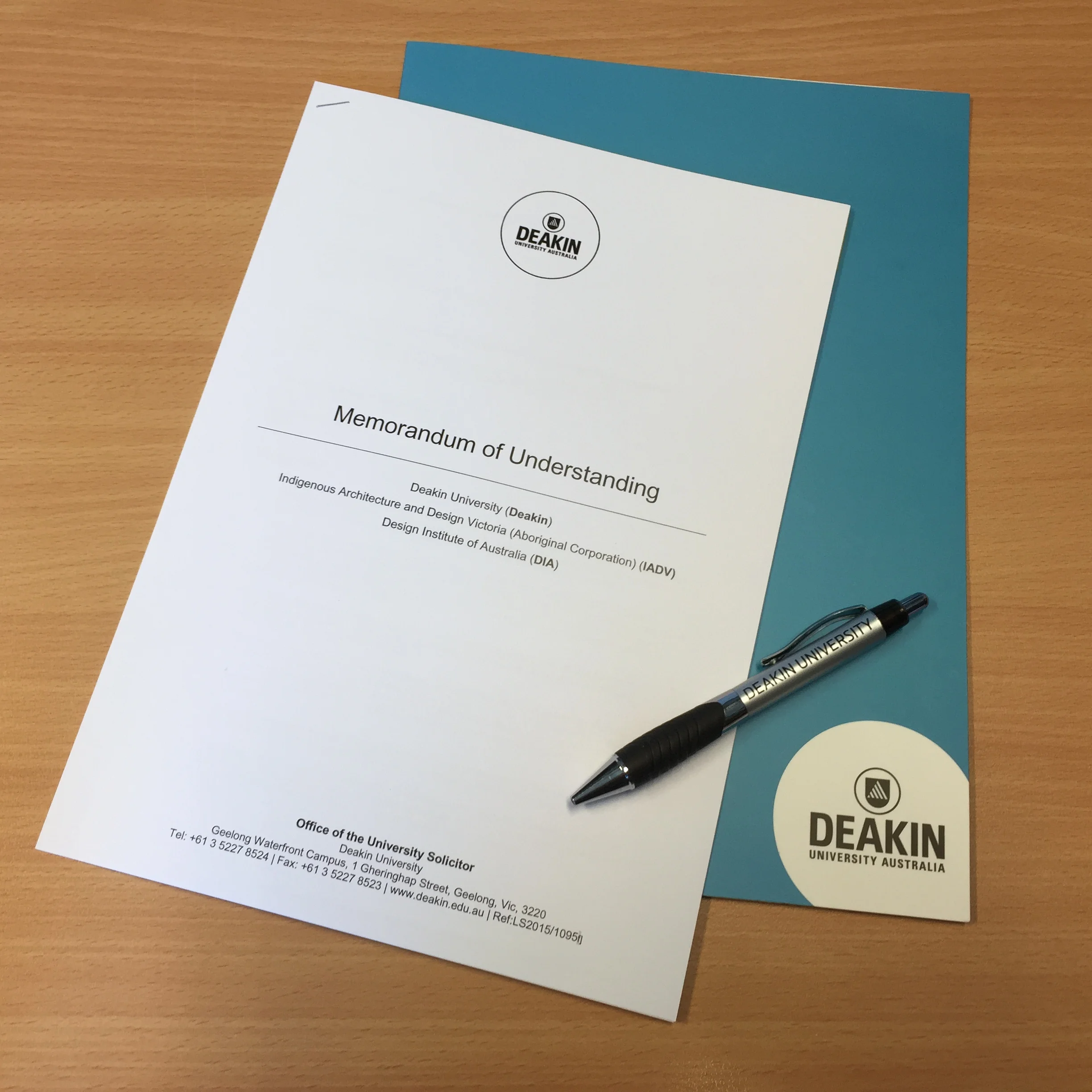Designed in Australia for over 70,000 years
With an objective to promote local design, the Design Institute of Australia (DIA) invited renown branding agency, R-co to develop a brand identification system that could be applied to Australian designed products. The aim was to highlight products which were designed in Australia but might be manufactured either locally or overseas.
The challenge for R-co was to create a design that reflects the strength and quality of design in Australia to both local and international audiences. The result was a Designed in Australia logo/brandmark that featured a stylised Boomerang within the letter ‘D’ for design.
R-co's Designed in Australia brandmark. Source: R-co
The design was well received and regarded by the DIA as effective in making a strong statement about Australian design history. Although happy with the Designed in Australia brandmark the DIA felt it appropriate to undertake a process of cultural consultation because it referenced such an iconic Australian Indigenous symbol.
On the 23 May 2016 the Design Institute of Australia (DIA) signed and Indigenous Design Memorandum of Understanding with Deakin University and Indigenous Architecture Victoria. In the spirit of the MOU, the DIA asked Deakin University to assist them to investigate the cultural acceptability if their design promotion initiative, ‘Designed in Australia’. Deakin University agreed to facilitate discussions and immediately called a meeting of relevant stakeholders.
The meeting was hosted by IADV Director, Jefa Greenaway at the offices at the Australian Institute of Architects on 21 July 2016. The IADV, Australia’s only Indigenous design association was deemed important to the discussion between stakeholders including the DIA and Richard Henderson from R-Co.
The issue of referencing Indigenous iconography was discussed in a broadly but the specific agenda to the appropriateness of featuring a stylised Boomerang within the Designed in Australia brandmark.
The DIA explained the purpose of the Designed in Australia concept to entitle certified designers to apply the brandmark to products that have legitimately been designed in Australia. The aim of the campaign is to build awareness and recognition of quality Australian design that is innovative and globally competitive.
During the meeting Richard Henderson explained the design rationale behind the brandmark created by his company, R-Co, “The objective of the brandmark is to reflect the strength and quality of design in Australia both locally and internationally. Our inspiration for the Designed in Australia identity focused on the boomerang – an iconic symbol of ingenuity. The boomerang incorporates the spirit of design throughout all its uses; as a weapon, a hunting tool, a ceremonial device, an artwork and a decorative artifact. It combines the notion of form and function, and its simple shape is timeless. By featuring a boomerang, the Designed in Australia brand mark acknowledges and celebrates a long history of innovation and design from the home of the world’s oldest continuing living cultures.”
Jefa Greenaway acknowledged the Boomerang as a national symbol and recocognised the value it had in highlighting the thousands of years of design in Australia, “By featuring a boomerang, the Design Australia brandmark acknowledges and celebrates a long history of innovation and design by our people”. He also added that the IADV would need to consult nationally with its members and stakeholders and the report back to the DIA.
The Design Institute of Australia should be congratulated on taking this respectful approach to the issue of Indigenous cultural referencing. VISIBLESTEPS is monitoring the discussion and will document and report on the outcome for future reference by designers and design stakeholders.
More details on the project are on the R-co website.







